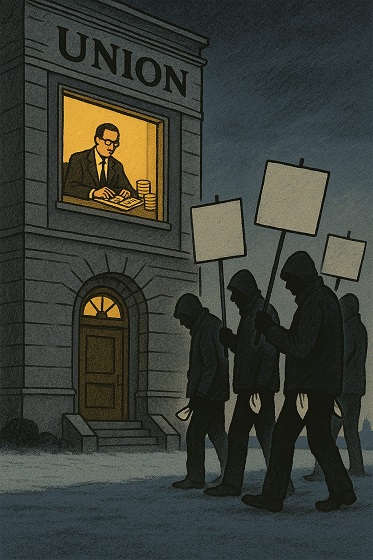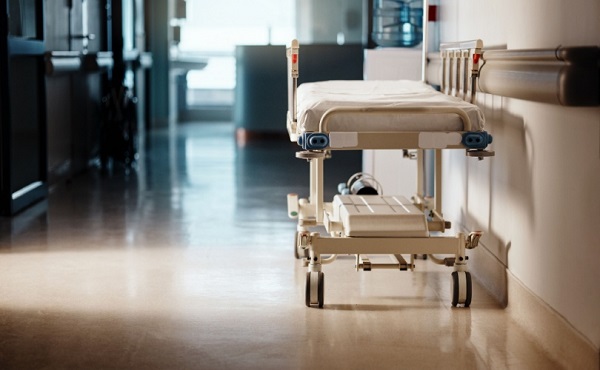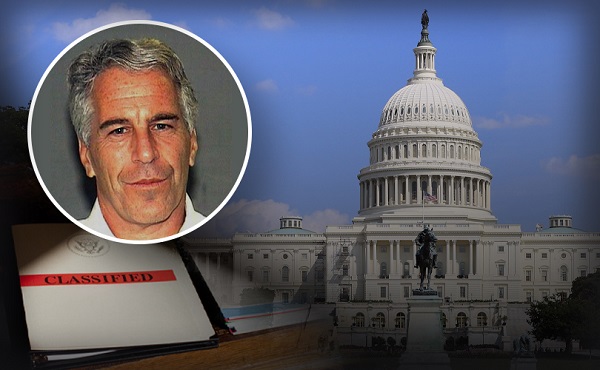Energy
It’s time to get excited about the great Canadian LNG opportunity
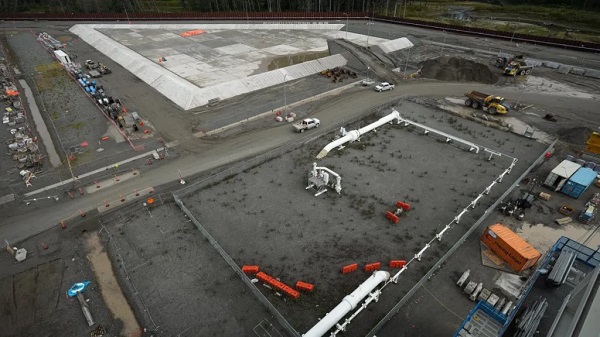
 By Stewart Muir
By Stewart Muir
Canada has a rare window to join the big leagues of LNG exporters—Qatar, Australia, and the United States are not waiting around, and neither should we.
I sometimes catch myself staring out over the waters of British Columbia’s coastline — so calm, so vast, so brimming with unspoken opportunity — and I can’t help but wonder how anyone could fail to notice the promise that Liquefied Natural Gas (LNG) represents for our nation’s future. This country sits atop some of the largest gas reserves on Earth, and we have two coasts eager to connect our product to global markets.
I’m a quietly enthusiastic type by nature, and I don’t often indulge in the “I-told-you-so” routine, but whenever I encounter someone who just hasn’t cottoned on to the excitement around LNG, I feel compelled to stage a gentle intervention.
In my day-to-day role as CEO of Resource Works, I work with communities from Fort St. John to Kitimat, and beyond. Let me assure you, if you want to see Canadians at work, proud of their craft, and eyeing a brighter future, you’ll find them along the pipeline routes and port terminals that are part of our budding LNG industry. And they’re just as commonly found in Vancouver, Victoria and the other cities, just harder to spot with no blue coveralls.
I’ve been following the natural gas story in British Columbia for more than a quarter of a century, going back to my days in the media field. As an editor at The Vancouver Sun, I created the paper’s first-ever energy beat after we noticed something big was stirring in the North East gas fields. It turned out to be an industry animated by regulatory innovation, rich geology, ambitious investors, and some of the most capable people you’ll ever meet.
When talk of LNG exports began to stir in 2011, I dove in with both feet. Over the past 15 years, I’ve followed the LNG file across Canada, around the world, and deep into the heart of British Columbia.
Along the way, I’ve met First Nations chiefs who proudly showed me the schools and businesses they built through new partnerships. I’ve also sat down with those who remain skeptical and had honest, sometimes searching conversations. I’ve learned something from all of them. This is an industry that, at its best, brings people together to solve problems, create opportunity, and build a future worth caring about.
Why am I still so enthused after all these years? LNG is not a flash in the pan, for starters. Through cyclical ups and downs—natural phenomena in any commodity game—international forecasts consistently show that LNG demand won’t be evaporating tomorrow or, quite likely, for several tomorrows yet. The International Energy Agency, the Canada Energy Regulator, and even the U.S. Energy Information Administration all point to steady growth in global LNG trade.
On top of that, if you follow the money, you’ll see billions of dollars flowing into new regasification terminals and record orders for LNG carriers. I may be old-fashioned, but I’ve always found that when so many investors plunk down their capital in one place, it’s seldom a fluke. The world has more than 700 LNG ships plying the seas these days, and hundreds more under construction. That’s not a small bit of confidence.
And let’s talk local: from where I sit, Canada’s jobs outlook tied to LNG looks like a real tonic for communities seeking new opportunities. Construction alone can employ entire regions. Then come the careers that last decades—plant operators, engineers, port and shipping managers, the works. It’s the sort of diversified prosperity that a resource economy yearns for.
We’ve even seen First Nations communities take equity stakes in major LNG projects, forging new partnerships that benefit everyone involved. That’s the model of inclusive economic development that Canadians like to talk about. It’s called walking the walk.
Those voices of skepticism — bless their hearts — sometimes say, “But what about price volatility? The commodity cycles? Are we sure this is sustainable?” Truthfully, no commodity is immune to upswings and downswings. But open a newspaper — digitally or in paper form, your choice— and you’ll find that countries all over the world are expanding their LNG-import infrastructure. Many of them, especially in Asia and Europe, see Canada as a steady, well-regulated, and (importantly) speedy supplier.
Yes, “speedy” might be an odd descriptor for us easygoing Canadians, but let’s not overlook that a West Coast port is only about eight or nine sailing days from major Asian markets, versus more than 20 from the U.S. Gulf Coast. You’d think we’d have lines of ships lined up right now, just for that advantage.
There’s another subtlety that some folks overlook. Right now, much of our gas still flows to the United States, often at discounted prices, only to be converted into LNG down there and sold globally at a premium. If that doesn’t make you shake your head in wonder, I’m not sure what will. Canadians have every reason to want to keep some of that up-chain value right here at home, funneling more of that revenue into local jobs and public coffers. That’s exactly the sort of well-to-customer supply chain we’re poised to build.
And if you’re still not impressed, consider the big jolt to GDP whenever a massive energy project crosses the finish line. Look no further than the Trans Mountain pipeline expansion: once it was substantially complete last year, the national GDP got a measurable jolt. It’s extremely rare that a single anything shows up that way. Now, with the first shipment of Canadian LNG preparing to leave Kitimat in the coming weeks, we can expect a repeat performance. It’s the real economic equivalent of an encore, if you will. And who doesn’t love an encore that boosts paycheques and government revenues?
Canadians may be known worldwide for politeness and hockey, but let’s not forget that boldness is also in our national DNA. Building a robust LNG sector that ties Western and Eastern Canada to major global markets is about as bold an economic strategy as we could pursue right now. Some might call it visionary, others might say it’s just common sense in a world that still demands substantial amounts of energy. Either way, Canada has a rare window to join the big leagues of LNG exporters—Qatar, Australia, and the United States are not waiting around, and neither should we.
At the end of the day, seeing Canadians capture more of the value from our natural resources rather than shipping it across the border at a discount is, for me, both pragmatic and patriotic. It’s the kind of deal that makes you wonder why anyone would hesitate. Perhaps that hesitation is just a bump in the road of public discourse—something we can gently, politely, and persistently overcome.
I, for one, am excited for the first shipment of LNG out of Canada’s West Coast, due any week now. A top executive with the project once whispered to me that the maiden cargo would be worth $100 million, but lately I’m hearing a single shipload is now probably worth double that.
So yes, I’m looking forward to the day when it’s not just a handful of tankers leaving our ports, but a regular fleet serving global customers. It will lift up the whole country, just as it has contributed to America’s tearaway economy in recent years and elevated Qatar from desert outpost to World Cup host nation.
Soon, maybe all the doubters will have recognized the obvious — and joined the rest of us on the bandwagon with front-row seats to Canada’s LNG future. Sure, I’m biased, but only because the facts keep reinforcing that this sector is poised to do a world of good for Canadians from coast to coast.
Energy
Expanding Canadian energy production could help lower global emissions
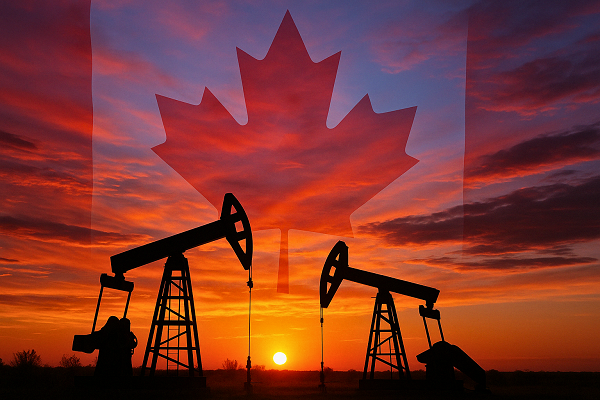
From the Fraser Institute
By Annika Segelhorst and Elmira Aliakbari
Canada’s most timely opportunity to lower overall global emissions is through expanded exports to regions that rely on higher-emitting fuel sources.
The COP30 climate conference in Brazil is winding down, after more than a week of discussions about environmental policy and climate change. Domestic oil and natural gas production is frequently seen as a fundamental obstacle to Canada’s climate goals. Yet the data shows that Canadian energy production is already among the world’s cleanest, generating lower greenhouse gas (GHG) emissions per barrel-of-oil-equivalent produced, among major producing countries. Expanding the role of Canadian oil and gas in global markets can replace higher GHG-emitting alternatives around the world, driving down global GHG emissions.
Prime Minister Carney’s first budget highlights Canada’s “emissions advantage” in a chart on page 105 that compares the amount of GHG emissions released from producing oil and natural gas across 20 major producing countries. Compared to many other top-producing countries, Canada releases fewer GHG emissions per barrel of oil and gas produced when considering all phases of production (extraction, processing, transport, venting and flaring).
For oil production, Canada has an advantage over most major producers such as Venezuela, Libya, Iran, Algeria, Nigeria, China, Russia and Qatar. Canada’s emissions per barrel of oil produced are below the global average, making Canada among the lower emitting producers worldwide.
Similarly, Canada’s natural gas production has an emissions per barrel equivalent that is lower than the global average and is below major producers such as Turkmenistan, Uzbekistan, Nigeria, Indonesia, China, Argentina, Malaysia, Australia, Algeria, Iran, Russia, India and the United States. The chart below reveals countrywide average GHG emissions per barrel of oil or natural gas produced in 2022.
Source: International Energy Agency (2023), The Oil and Gas Industry in Net Zero Transitions 2023, IEA, Paris, p. 69
Canada’s emissions advantage stems from years of technological innovations that require less energy to produce each barrel of oil along with improvements in detecting leaks. From 1990 to 2023, Canada’s total production of crude oil rose by 199 per cent, while emissions per barrel of oil produced declined by 8 per cent, according to Environment and Climate Change Canada (ECCC). In the oilsands, since 1990 emissions per barrel have fallen by nearly 40 per cent while emissions from natural gas production and processing have decreased by 23 per cent.
Canada has already implemented many of the most practical and straightforward methods for reducing carbon emissions during oil and gas production, like mitigation of methane emissions. These low-hanging fruits, the easiest and most cost-effective ways to reduce emissions, have already been implemented. The remaining strategies to reduce GHG emissions for Canadian oil and gas production will be increasingly expensive and will take longer to implement. One such approach is carbon capture, utilization, and storage (CCUS), a technology which traps and stores carbon dioxide to prevent it from reaching the atmosphere. Major infrastructure projects like this offer potential but will be difficult, costly and resource intensive to implement.
Rather than focusing on increasingly expensive emission reductions at home, Canada’s most timely opportunity to lower overall global emissions is through expanded exports to regions that rely on higher-emitting fuel sources. Under a scenario of expanded Canadian production, countries that presently rely on oil and gas from higher-emitting producers can instead source energy from Canada, resulting in a net reduction in global emissions. Conversely, if Canada were to stagnate or even retreat from the world market for oil and gas, higher-emitting producers would increase exports to accommodate the gap, leading to higher overall emissions.
As Canada’s climate and energy policy continues to evolve, our attention should focus on global impact rather than solely on domestic emissions reductions. The highest environmental impact will come from enabling global consumption to shift towards lower-emitting Canadian sources.
Energy
Here’s what they don’t tell you about BC’s tanker ban

From Resource Works
By Tom Fletcher
Crude oil tankers have sailed and docked on the British Columbia coast for more than 70 years, with no spills
BC Premier David Eby staged a big media event on Nov. 6 to once again restate his opposition to an oil pipeline from Alberta to the Prince Rupert area.
The elaborate ceremony to sign a poster-sized document called the “North Coast Protection Declaration” was dutifully covered by provincial and national media, despite having no actual news content. It is not a response to Alberta’s plan to finance preliminary work on a new oil pipeline, Eby insisted. It’s to confirm the direction of growing the BC economy without, you know, any more oil pipelines.
The event at the opulent Vancouver Convention Centre West was timed to coincide with the annual BC Cabinet and First Nations Leaders Gathering, a diplomatic effort set up 10 years ago by former premier Christy Clark. This year’s event featured more than 1,300 delegates from 200 First Nations and every BC government ministry.
A high-profile event with little real news
The two-day gathering features 1,300 meetings, “plus plenary and discussion sessions on a variety of topics, including major projects, responding to racism, implementation of the Declaration Act, and more,” the premier’s office announced.
Everyone’s taxpayer-funded hotels and expense accounts alone are an impressive boost to the economy. Aside from an opening news conference and the declaration event at the end, the whole thing is closed to the public.
The protection declaration is a partnership between the BC government and the Coastal First Nations, Eby said. As I mentioned in my Oct. 15 commentary, Coastal First Nations sounds like a tribal council, but it isn’t. It’s an environmental group started in the late 1990s by the David Suzuki Foundation, with international eco-foundation funding over the years that led to the current name, Coastal First Nations Great Bear Initiative.
The evolution of the Coastal First Nations initiative
Their current project is the Great Bear Sea, funded by $200 million from the federal government, $60 million from BC, and $75 million from “philanthropic investors.” This is similar to the Great Bear Rainforest conservation project, backed by mostly US billionaire charity funds, that persuaded Justin Trudeau to turn the voluntary tanker exclusion zone into Canadian law.
Leadoff speaker in Vancouver was the current Coastal First Nations president, Heiltsuk Chief Marilyn Slett. She repeated a well-worn story about her remote Central Coast community of Bella Bella still struggling with the effects of an “oil spill” in 2016.
In fact, the 2016 event was the sinking of a tugboat that ran aground while pushing an empty fuel barge back down from Alaska to a refinery in Washington to be refilled. The “oil spill” was the diesel fuel powering the tugboat, which basic chemistry suggests would have evaporated long ago.
Fuel dependence on the remote BC coast
Remote coastal settlements are entirely dependent on fuel shipments, and Bella Bella is no different. It has no road or power grid connections, and the little seaside village is dominated by large fuel tanks that have to be refilled regularly by barge to keep the lights on.

Alaska North Slope crude has been shipped by tanker to Washington and beyond for more than 60 years. Yes, there’s a North Coast “exclusion zone” where US-bound tankers go west around Haida Gwaii rather than down the Inside Passage, but once the ships reach Vancouver Island, they sail inside right past Victoria to refineries at Cherry Point, March Point, and other US stops.
Through the tall windows of the Vancouver convention centre, you can watch Aframax crude tankers sail past under the Second Narrows and Lions Gate bridges, after loading diluted bitumen crude from the expanded Westridge Terminal in Burnaby. That is, of course, the west end of the Trans Mountain Pipeline, which has operated since 1954 with no spills, including the branch line down to the Cherry Point complex.
There are many more crude tankers exiting Vancouver now that the TMX expansion is complete, but they aren’t filled all the way because the Second Narrows is too shallow to allow that. A dredging project is in the works to allow Aframax-sized tankers to fill up.
A global market for Alberta crude emerges
They enter and exit Burrard Inlet surrounded by tethered tugboats to prevent grounding, even if the tanker loses power in this brief stretch of a long voyage that now takes Alberta crude around the world. Since the TMX expansion, shipments that used to go mostly to California now are reaching Korea, Japan, China, Hong Kong, and Singapore as well.
The US captive discount has shrunk, the tripled pipeline capacity is rapidly filling up, and pumping stations are being added. This is the very definition of Mark Carney’s nation-building projects to get Canada out of the red.
The idea that the North Coast can host fuel barges, LNG tankers, bunker-fired cruise ships, and freighters but can’t tolerate Canadian crude along with the US tankers is a silly urban myth.
Tom Fletcher has covered BC politics and business as a journalist since 1984. [email protected]. X: @tomfletcherbc
-

 Health2 days ago
Health2 days agoCDC’s Autism Reversal: Inside the Collapse of a 25‑Year Public Health Narrative
-

 Daily Caller2 days ago
Daily Caller2 days agoBREAKING: Globalist Climate Conference Bursts Into Flames
-

 Crime2 days ago
Crime2 days agoCocaine, Manhunts, and Murder: Canadian Cartel Kingpin Prosecuted In US
-

 Business13 hours ago
Business13 hours agoNew airline compensation rules could threaten regional travel and push up ticket prices
-
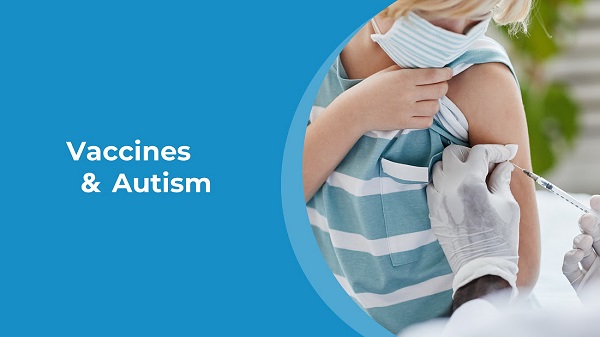
 Health2 days ago
Health2 days agoBREAKING: CDC quietly rewrites its vaccine–autism guidance
-

 Great Reset1 day ago
Great Reset1 day agoEXCLUSIVE: The Nova Scotia RCMP Veterans’ Association IS TARGETING VETERANS with Euthanasia
-

 Energy2 days ago
Energy2 days agoHere’s what they don’t tell you about BC’s tanker ban
-

 Bruce Dowbiggin2 days ago
Bruce Dowbiggin2 days agoBurying Poilievre Is Job One In Carney’s Ottawa






